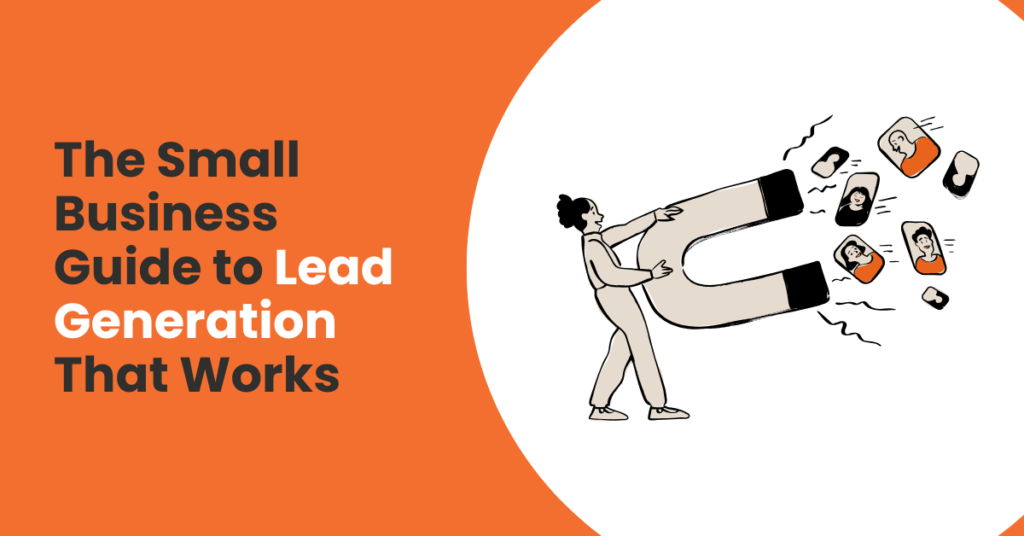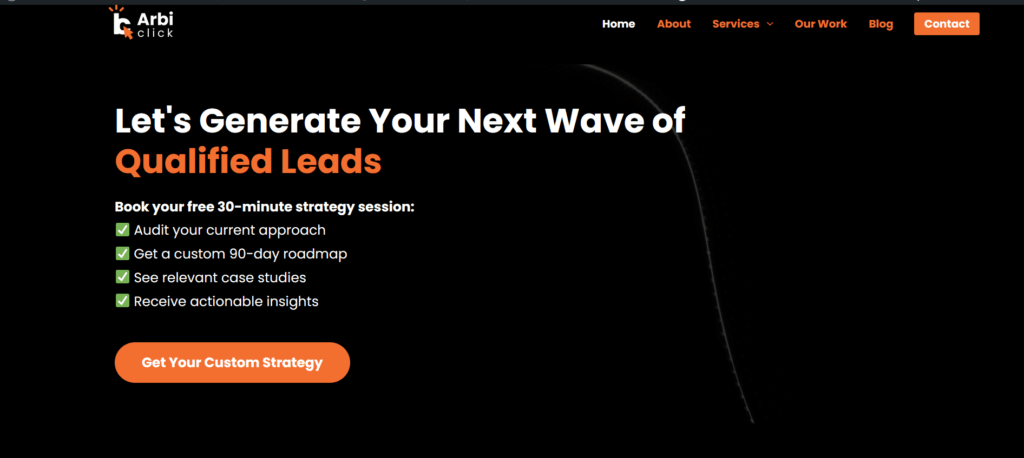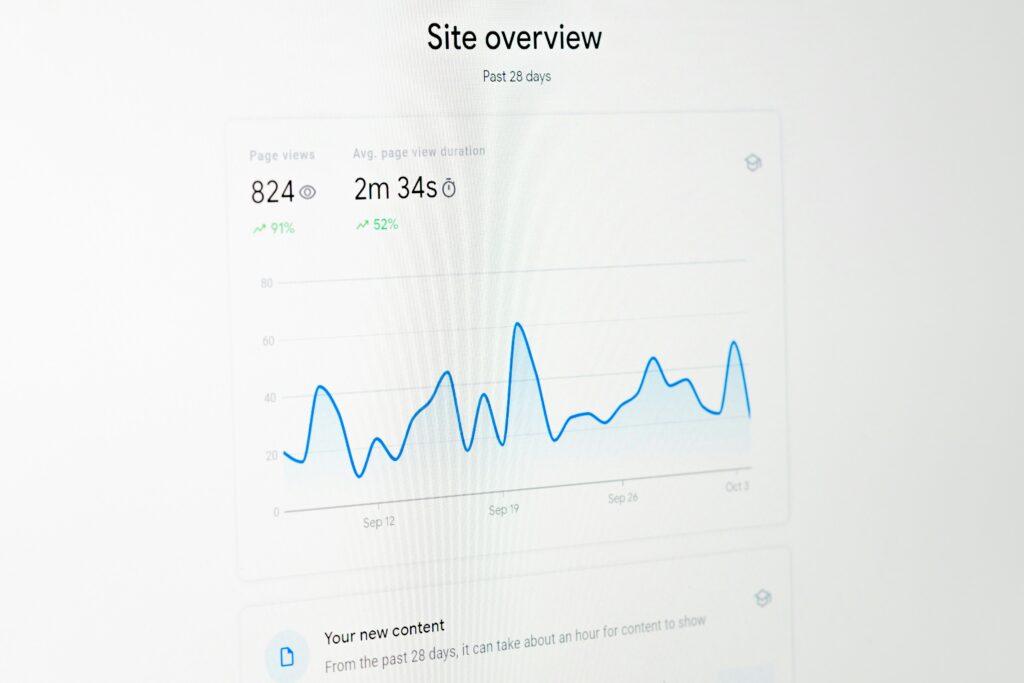The Small Business Guide to Lead Generation That Works

Talking about lead generation, every small business owner faces the same fundamental challenge: how do you consistently attract potential customers without the marketing budget of a Fortune 500 company?
You know your product or service can genuinely help people, but getting that message in front of the right audience feels like an uphill battle against competitors with deeper pockets and larger teams.
This frustration is compounded by the overwhelming amount of marketing advice available today. Everyone seems to have a “proven system” or “revolutionary strategy” that promises to transform your business overnight.
The reality is that most of these approaches are either designed for larger businesses with substantial resources or are simply recycled tactics that worked in different market conditions.
What small businesses actually need is a fundamentally different approach to lead generation—one that leverages your unique advantages while working within realistic budget and time constraints.
The strategies that work best for small businesses aren’t necessarily the most sophisticated or expensive ones. Instead, they’re often the most thoughtful, personal, and value-driven approaches that larger companies struggle to implement effectively.
Also read: 5 Common Google Ads Mistakes SMEs Make and How to Avoid Them

Seek Opportunity by Understanding the Small Business Advantage
Before diving into specific tactics, it’s crucial to understand the unique advantages that small businesses possess in lead generation.
While you might lack the marketing budget of larger competitors, you have several inherent advantages that, when properly leveraged, can be far more powerful than any advertising campaign.
- First, you have the ability to be genuinely personal in your interactions. Large companies struggle to create authentic, individual connections because their systems are designed for scale, not intimacy.
As a small business owner, you can personally respond to inquiries, remember individual customer preferences, and create experiences that feel tailored rather than automated. - Second, you possess deep expertise in your specific niche. While large companies often need to appeal to broad markets, small businesses typically serve specific audiences with particular needs.
This specialization allows you to understand your customers’ challenges, motivations, and decision-making processes in ways that generalist competitors cannot match. - Third, you have the agility to adapt quickly to market changes and individual customer needs.
When you discover that a particular message resonates with your audience or that a specific approach generates better results, you can pivot immediately without navigating complex approval processes or large organizational structures.

These advantages form the foundation for effective small business lead generation.
Instead of trying to compete with larger companies on their terms, successful small businesses leverage their personal touch, specialized expertise, and operational flexibility to create lead generation systems that larger competitors cannot easily replicate.
Also read: 10 Tips for Effective Digital Marketing
The Psychology of Trust in Small Business Marketing
Understanding the psychological factors that influence how potential customers evaluate small businesses is crucial for developing effective lead generation strategies.
Unlike established brands with widespread recognition, small businesses must overcome what psychologists call the “uncertainty barrier”—the natural hesitation people feel when considering a business they’re unfamiliar with.
This uncertainty isn’t necessarily about the quality of your product or service. Instead, it’s about risk perception.
When potential customers can’t rely on brand recognition or extensive social proof, they become more sensitive to trust signals and more likely to seek evidence of competence and reliability before making a commitment.
This psychological reality actually creates opportunities for small businesses that understand how to address these concerns proactively.
By focusing on transparency, demonstrating expertise, and providing immediate value, you can often build trust more quickly than larger competitors who rely primarily on brand recognition.

The key is understanding that trust-building for small businesses happens through accumulated evidence rather than single interactions.
Each touchpoint—from your website design to your email responses to your social media presence—either reinforces or undermines the trust you’re working to build. This is why consistency and authenticity are so crucial for small business lead generation success.
Also read: Unleashing the Power of Click Marketing As PPC, CPC, and CTR
Strategic Lead Generation Magnets:
Beyond Generic Downloads
The concept of lead magnets—free resources offered in exchange for contact information—has become so commonplace that many business owners treat them as a checkbox item rather than a strategic tool.
However, when designed and positioned correctly, lead magnets can be incredibly effective for small businesses because they address both the value delivery and trust-building challenges simultaneously.
The most effective lead magnets for small businesses solve immediate, specific problems that your ideal customers face regularly.
Instead of creating broad, generic resources that might appeal to anyone, focus on addressing the precise pain points that drive people to seek out businesses like yours.
Consider the difference between a generic “Marketing Checklist” and a specific “30-Day Content Calendar Template for Local Restaurants.”
The latter immediately communicates relevance to a specific audience, demonstrates understanding of their unique challenges, and provides actionable value that recipients can implement immediately.

The timing and positioning of your lead magnet opportunities also significantly impact their effectiveness. Rather than simply placing signup forms randomly throughout your website, consider the user journey and identify moments when visitors are most likely to be receptive to your offer.
This might be after they’ve read a blog post that addresses a specific problem, when they’re about to leave your site, or when they’ve spent significant time exploring your services.
The follow-up sequence after someone downloads your lead magnet is equally important. This is your opportunity to continue building trust, demonstrate ongoing value, and gradually introduce your services in a way that feels natural and helpful rather than pushy or sales-focused.
Also read: Best 5 Proven Digital Marketing Strategies
Conversion Optimization for Small Business Websites
Many small business owners focus heavily on driving traffic to their websites while neglecting to optimize the experience for visitors who actually arrive.
This represents a significant missed opportunity because improving conversion rates often provides better returns on investment than increasing traffic volume.
Exit-intent technology represents one of the most underutilized tools for small business lead generation. These systems detect when visitors are about to leave your site and present them with a final value proposition.
While some people find popups annoying, exit-intent offers are different because they only appear when someone has already decided to leave, making them non-intrusive while providing a last opportunity to capture interest.
The key to effective exit-intent offers is understanding what might motivate someone to reconsider leaving.
This might be a discount for first-time customers, access to exclusive content, or simply a different way to engage with your business that feels less committal than the actions they were avoiding.
Your website’s “Thank You” pages represent another frequently overlooked conversion opportunity. After someone has already taken one action—whether downloading a resource, signing up for a newsletter, or making a purchase—they’re in a heightened state of engagement with your business.

This is the perfect time to guide them toward additional actions that deepen their relationship with your brand.
Instead of simple confirmation messages, consider using Thank You pages to introduce complementary resources, invite social media connections, or suggest next steps that would benefit the visitor.
The goal isn’t to overwhelm them with additional offers but to capitalize on their existing interest and engagement.
Also read: SEO Tips for New Websites: Improving SEO Rank Faster
The Art of Personal Outreach in Digital Spaces
Direct outreach through social media platforms has earned a negative reputation due to the prevalence of poorly executed, overly aggressive approaches.
However, when done thoughtfully and strategically, personal outreach can be incredibly effective for small businesses because it leverages your advantages in personalization and relationship building.
The key distinction between effective and ineffective outreach lies in leading with value rather than requests. Instead of reaching out to tell people about your business, focus on reaching out to help them with something they’re already working on or struggling with.
This approach requires more research and preparation, but it generates significantly better results because it demonstrates genuine interest in their success rather than just your own.
Effective outreach begins with observation and engagement. Before reaching out directly, spend time understanding what your potential customers are sharing, what challenges they’re discussing, and what goals they’re pursuing.
This information allows you to craft messages that feel relevant and helpful rather than generic and self-serving.
The timing of your outreach also matters significantly. People are most receptive to helpful messages when they’re actively working on related challenges or have recently shared content that demonstrates current interest in your area of expertise.
This requires consistent monitoring and engagement, but it leads to much higher response rates than bulk outreach campaigns.
Also read: How to Choose the Most Suitable Digital Marketing Agency

Creating Interactive Value Through Tools and Calculators
Interactive content represents one of the most effective yet underutilized lead generation strategies for small businesses.
Unlike static content that people consume passively, interactive tools and calculators engage users actively while providing immediate, personalized value.
The effectiveness of interactive content stems from several psychological principles.
- First, people are more likely to value and remember information they’ve actively participated in creating.
- Second, personalized results feel more relevant and valuable than generic information.
- Third, the investment of time and effort to complete an interactive tool creates a sense of commitment that increases the likelihood of further engagement.
For small businesses, interactive tools serve multiple purposes simultaneously. They demonstrate expertise by showing that you understand your industry well enough to create useful calculations or assessments.
They provide immediate value that builds trust and goodwill. They capture information about prospects’ specific situations and challenges, allowing for more targeted follow-up. And they create shareable content that can extend your reach organically.

The key to successful interactive content is ensuring that the results are genuinely useful and actionable. People should walk away with specific insights or recommendations that they can implement immediately.
This might be a calculation that helps them make a decision, an assessment that identifies areas for improvement, or a customized plan based on their specific circumstances.
Also read: Content Marketing for SEO: Practical Guide for Startups and Ecommerces
Strategic Content Marketing Through Guest Posting
Guest posting has evolved significantly over the years, moving from a primarily SEO-focused tactic to a relationship-building and audience-development strategy.
For small businesses, guest posting offers unique advantages because it allows you to tap into established, engaged audiences without the time and expense of building your own following from scratch.
The most effective guest posting strategies for small businesses focus on audience alignment rather than publication size.
Writing for a smaller, highly targeted publication that serves your exact ideal customers often generates better results than contributing to larger, more general publications where your message might get lost or reach less relevant readers.
When identifying guest posting opportunities, look for publications, blogs, or communities where your ideal customers are already spending time and seeking information.
This might include industry-specific publications, local business journals, or online communities focused on particular challenges or interests that align with your expertise.

The content you contribute should demonstrate expertise while providing immediate value to the publication’s audience.
Instead of writing promotional pieces about your business, focus on sharing insights, strategies, or case studies that readers can implement regardless of whether they ever become your customers. This approach builds trust and authority while subtly establishing your credibility.
Also read: How Social Media Management Can Help to Boost Your Company
Maximizing Website Conversion Through Strategic Design
Your website serves as the central hub for all your lead generation efforts, making its optimization crucial for success.
However, effective website optimization for small businesses differs significantly from the approaches used by larger companies with higher traffic volumes and more resources for testing.
Persistent call-to-action elements, such as sticky headers or floating buttons, can significantly improve conversion rates by keeping your primary offer visible regardless of where visitors are on your site.
This is particularly important for small business websites where visitors might not scroll through multiple pages or spend extended time exploring different sections.
The key to effective persistent CTAs is ensuring they feel helpful rather than pushy. This means using language that focuses on the value to the visitor rather than the benefit to your business.

Instead of “Contact Us,” consider “Get Your Free Consultation” or “Download Your Custom Guide.” The goal is to make the CTA feel like a natural next step in their journey rather than an interruption.
Your website’s navigation and information architecture also play crucial roles in lead generation success. Visitors should be able to quickly understand what you offer, who you serve, and how to take the next step.
This requires clear, jargon-free language and logical organization that matches how your potential customers think about their needs and challenges.
Also read: How to Convert Clicks: Guide to Improve Ecommerce Landing Pages
Building Systematic Follow-Up Processes
One of the biggest differences between successful and unsuccessful small business lead generation lies in systematic follow-up processes. Many businesses focus heavily on generating initial interest but fail to nurture that interest into actual sales conversations or customer relationships.
Effective follow-up systems balance persistence with respect, providing ongoing value while gradually building toward sales conversations.
This requires understanding the typical decision-making timeline for your industry and creating content and touchpoints that support prospects throughout their evaluation process.
Email sequences represent the most common follow-up method, but they’re often implemented poorly. Instead of sending a series of promotional messages, focus on creating educational content that helps prospects understand their options, evaluate different approaches, and make informed decisions.
There are a lot of email software that can help you to generate emails you want, like Helpdesk that including AI’s feature in their email automation.
Your goal is to become a trusted advisor throughout their decision-making process, not just a vendor seeking their business.
The frequency and timing of follow-up communications should reflect the complexity and timeline of your typical sales process.
For high-consideration services or products, longer, more educational sequences work better than frequent, promotional messages. For simpler offerings, shorter sequences with clearer calls-to-action might be more appropriate.

Measuring and Optimizing Your Lead Generation Efforts
Effective lead generation for small businesses requires ongoing measurement and optimization, but the metrics that matter most differ from those used by larger organizations.
Instead of focusing primarily on volume metrics like total website traffic or social media followers, small businesses should prioritize quality and conversion-focused measurements.
Lead quality metrics are often more valuable than lead quantity metrics for small businesses. This includes measures like the percentage of leads who respond to initial outreach, the average time from lead generation to sales conversation, and the conversion rate from lead to customer.
These metrics help you understand whether your lead generation efforts are attracting genuinely interested prospects or simply generating low-quality contacts.
The lifetime value of customers acquired through different lead generation channels provides crucial insights for resource allocation. Some channels might generate fewer leads but higher-value customers, while others might produce more leads but lower average sales.
Understanding these differences helps you focus your limited time and resources on the most effective approaches.
Response time metrics are particularly important for small businesses because quick, personal responses can be a significant competitive advantage.
Tracking how quickly you respond to new leads and how this impacts conversion rates can help you identify opportunities to improve your processes and stand out from competitors who rely on automated or delayed responses.
Also read: 10 Underrated Marketing Channels You Shouldn’t Ignore Today

Creating Sustainable
Lead Generation Systems
The ultimate goal of small business lead generation isn’t just to generate immediate leads but to create sustainable systems that continue working over time with minimal ongoing effort. This requires thinking systematically about how different tactics work together and reinforce each other.
Sustainable lead generation systems are built on compound effects rather than one-time tactics.
For example, guest posting not only generates immediate exposure but also builds relationships with other business owners, improves your website’s search engine visibility, and creates content that can be repurposed across multiple channels.
The key to sustainability is focusing on activities that provide multiple benefits and continue generating value over time.
This might include creating evergreen content that continues attracting search traffic, building relationships with referral partners who can provide ongoing lead sources, or developing systems that turn existing customers into advocates who generate referrals.
Also read: 5 Reasons You Should Hire a Digital Marketing Agency Now!
Integrating Lead Generation with Overall Business Strategy
Effective lead generation for small businesses cannot be separated from overall business strategy. Your lead generation efforts should align with your capacity to serve new customers, your revenue goals, and your long-term vision for business growth.
This integration requires thinking carefully about the types of customers you want to attract and ensuring your lead generation efforts are designed to reach those specific people.
It also means considering how your lead generation processes reflect your brand values and the customer experience you want to create.
The most successful small businesses view lead generation not as a separate marketing activity but as an integral part of their customer experience strategy.
Every touchpoint, from initial awareness through final purchase, should reflect the same values, quality standards, and attention to detail that define your overall business approach.

Conclusion: Building Your Lead Generation Foundation
Successful lead generation for small businesses comes down to understanding your unique advantages, focusing on value creation, and building systems that work within your resource constraints.
While you might not have the marketing budget of larger competitors, you have opportunities for personalization, specialization, and agility that can be far more powerful when properly leveraged.
The strategies we’ve explored—from strategic lead magnets to personal outreach to interactive content—all share common principles: they prioritize relationship building over transaction seeking, focus on providing immediate value, and leverage the personal touch that small businesses can deliver better than anyone else.
Remember that effective lead generation is not about implementing every possible tactic but about choosing the approaches that align best with your business model, target audience, and personal strengths.
Start with one or two strategies that feel most natural and sustainable for your situation, execute them consistently, and gradually expand your efforts as you build momentum and confidence.
The small businesses that succeed with lead generation are those that commit to serving their prospects and customers genuinely, consistently, and with the personal attention that only small businesses can provide.
When you focus on building trust, delivering value, and creating remarkable experiences, lead generation becomes a natural result of exceptional business practices rather than a separate marketing challenge.
Also read: How to Master Google Ads for Digital Marketing Success?

